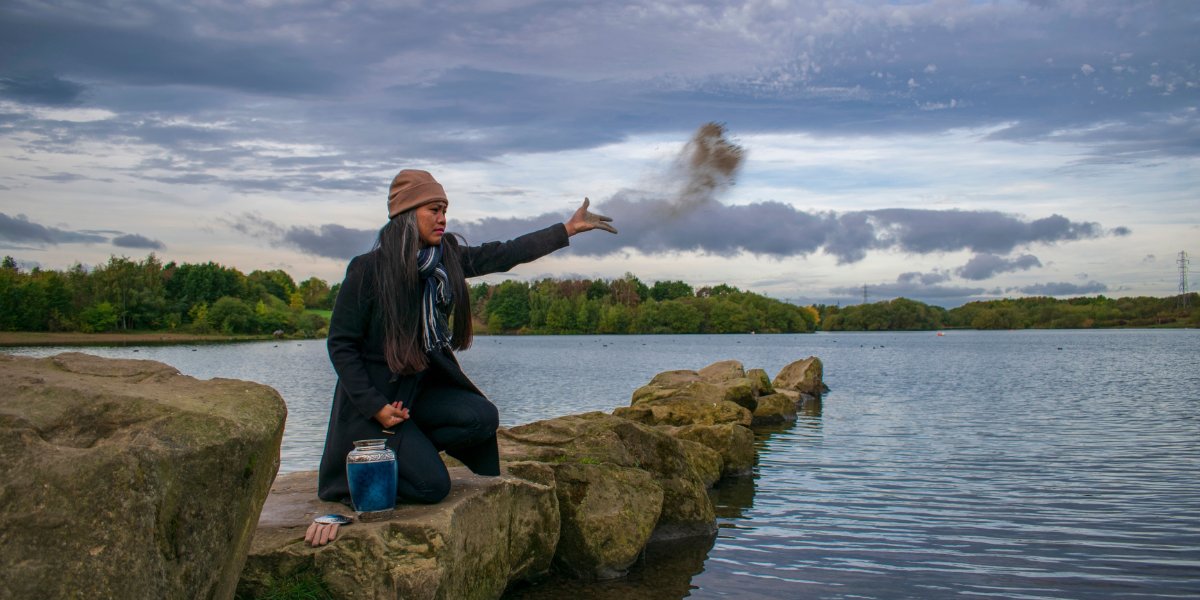
Updated on 11/13/20
This article covers six different ways to scatter or bury ashes, including casting, burial in a trench, raking, scattering over water, aerial scattering and green burial.
Although there are certainly rules and laws regulating the disposition of ashes on land, water or in the air, your choices are largely left up to your own discretion.
These ideas for scattering and burial ceremonies should always come with the loved one and those left to grieve in mind. From the selection of urns to the ceremonies conclusion, you will find that you have the freedom to make choices that give you peace.
Urns for Scattering and Burial
At present, anyone who browses for urns for scattering, burial or as a keepsake might be surprised by the wonderful variety available.
Urns are made from a wide selection of materials, shapes and sizes. When purchasing urns, families should consider all their plans for the ashes. If you intend to scatter or bury the ashes completely, you may only need one urn.
Urns that will remain with the family following the scattering ceremony can be as unique and individual as the loved one you honor. Many urns are customizable and feature themes like sports, automobiles or natural symbols that memorialize a loved one's interests in life.
During a trenching or green burial ceremony, families should choose urns that will biodegrade fully. Natural urns come in different shapes and styles, incorporating features like artwork. They range from box and pillow designs composed of 100 percent biodegradable materials to urns made of sweet grass and palm.
Although complete scattering or burial is a popular option, plenty of families choose to reserve a portion of the ashes as a keepsake or to share with other relatives and friends. Small keepsake urns hold a minute amount of ashes, and are as enigmatic as can be.
You might select small urns cast in the same shape as the urn used for burial. Or, the family may choose to have the ashes put into memorial jewelry or ornaments to give to those left behind.
The most important thing is to choose the urn or keepsake that suits the family's needs, as well as the style of the person who has passed.
What is Casting Scattered Ashes?
The History of Casting
Casting was a popular practice among both the Ancient Greeks and Romans. Excavations and ancient texts reveal that in the Ancient Greek city of Lefkandi, friends and loved ones customarily scattered a small amount of the cremated ashes across the ground as a memorial service to the departed.
Perhaps one of the most recognizable traditional uses of casting, still in practice today, is the ancient Hindu rite of scattering cremated remains in the Ganges River. In the Hindu faith, being cast into the Ganges is very desirable, and permanent pyre supports line the river in some holy cities. Similarly in Bali, high-ranking people and other people deemed worthy enough are cremated on special towers, with the remains scattered across the water.
Modern Casting Ceremonies
Most casting ceremonies begin with a brief speech or eulogy, music or a poetry reading. Some prefer to recite passages or personal memories while casting the ashes over the ground, water, or into the air. Many take photos to serve as keepsakes afterwards. Depending on where you hold the ceremony, candles and photos may be used to personalize the service. A wreath or individual flowers could be placed into water along with the ashes. Some loved ones mix the ashes with wild flower seeds or birdseed before casting them, to add a touch of the natural environment.
Casting can also be performed from a boat or, in some cases, from the air via a privately chartered plane or helicopter. Before scattering ashes openly in a public place, contact local officials to find out about community regulations, as a means to ensure that your memorial is as beautiful as you intend.
What is Trenching Cremated Remains?
Throughout most of the Roman Empire, cremating was mainstream, with many families choosing to bury cremated remains in a trench or pit afterward. Excavations at Roman settlements in Britain indicate that ashes were often placed in wooden buckets, and were sometimes accompanied by objects and personal belongings before being buried in trenches.
Modern Trenching Ceremonies
Today's trenching ceremonies are highly personal memorials. Families often choose to add their own touches to the trenching service, forming shallow trenches in the shape of the deceased's initials, a heart, or a short message before scattering the ashes inside and covering it with soil. They might display a keepsake or biodegradable urn during the service, before the ashes are put in the trench.
Trenching is also popular along beaches, where the rising tide is allowed to gently wash the remains to sea. Ceremonies may be timed to coincide with the tide to allow loved ones to watch as the remains return to the sea.
Many people decide to take photos of the ceremony or to encircle the area with candles, both of which can be distributed as keepsakes. They may join hands around the trench and recite a poem or recall memories that they will never forget.
What is Raking Ashes?
The process of raking ashes is to incorporate the ashes lightly into the soil, to contribute to the environment by providing nutrients for flowers and other plants.
History of Raking
Archeological excavations reveal that while ancient civilizations buried complete urns, they also sometimes incorporated the ashes back into the soil. Far back in history, cremation rites and rituals varied markedly from one province or settlement to another.
Raking provided a way to return the loved one's remains to the earth for all eternity. Raking may have been especially important to more nomadic groups, where deeper pit burials were unwarranted and carrying ashes would have proven too cumbersome.
Modern Raking Ceremonies
Today, raking ceremonies rely heavily on symbolism to promote understanding. Many ceremonies take place in scattering grounds known as "memory gardens," places set aside by communities, religious institutions and public cemeteries for the specific purpose of scattering, trenching or raking ashes.
As an alternative, beach locations are popular, as they allow the remains to be washed to sea. For any location, check local laws before holding a raking ceremony, to ensure you do not run afoul of local laws.
Raking may be performed by a spouse or child, or by friends and loved ones of the deceased. This offers an opportunity to pay respects and achieve a sense of closure for everyone involved. Depending on where the ceremony takes place, some family members may wish to scatter seeds along with the ashes to provide a living memory.
Some families like to maintain a degree of the traditional during the ceremony, with music, eulogies or poetry readings. Others take pictures and notes from guests to create a memory book for the grieving family. Many memory gardens offer opportunities to erect stones or other memorials, including benches or bird feeders.
Following the ceremony, you may choose to keep or donate the rake to a community gardening program.
History of Scattering Over Water
From a cultural standpoint, scattering a loved one's ashes over the water is often considered a symbolic representation of the ethereal spirit being carried away from the constraints of the physical body.
It has a long history, especially in Asian cultures. Hinduism teaches that the goddess Ganga descended from heaven to save the spirits of the dead from the netherworld. Her path from heaven to earth also provides a path for the deceased to enter heaven. Committing the ashes of the deceased to the Ganges River in India enables people to begin their journey to the next life.
Likewise in Tibet, scattering ashes over a lake or stream has held great traditional significance for Buddhists. As remains slowly dissolve into the water, they release the spirits of the dead so they may ascend into heaven.
Modern Water Scattering Ceremonies
Scattering ashes over the water is usually done by boat or air, or at the water's edge. When done from a boat, plane or helicopter, the boat, aircraft operator or other officiant performs the scattering.
Of course, some families may elect to pilot their own boats or planes, when a private pilot is also a family member. As with any type of public ash dispersal, you may want to contact local authorities before casting the ashes over water to make sure you are compliant with laws and regulations.
What is Aerial Scattering of Ashes?
Like scattering over water, aerial scattering involves the dispersal of a loved one's ashes over a larger area. This method has grown in popularity in recent years as more people look for ways to cast ashes over a wider geographic area or location.
Aerial scattering of ashes can be done by plane, helicopter, hang glider or even hot air balloon. Some people use skydivers to disperse ashes over a specific area.
History of Aerial Scattering
Scattering ashes by air is a relatively modern concept since it relies on air travel technology to be completed. While once the purview of private or military pilots and their families, today aerial scattering is the choice of many men and women who wish to have their ashes truly become dust in the wind.
Traditionally, aerial scattering has been the preferred method chosen by many former military members, especially from the same type of aircraft they once piloted or flew in. In 2014, one World War II Veteran had his ashes scattered from a B-25 bomber, the same type of aircraft he piloted for more than 50 missions in the South Pacific during World War II.
Modern Aerial Scattering Ceremonies
Aerial ash scattering is much more widely available now than it was even a few decades ago. Some ash scattering service providers offer flights over historic landmarks, parks or other areas. A family that enjoyed happy memories vacationing in a national park, at the seashore or in another location may find comfort in having their loved one's ashes scattered by air over the area.
Ceremonies for aerial scattering often begin with a small service on the ground, most commonly at the airport prior to take off. In some cases, one or more family members may decide to accompany the ashes during the flight, while others may leave the flight to the pilot and any additional crew.
Some pilots release ashes directly from the cockpit while others may use funnel or tube devices to release them from the outside of the plane. Lower flights or dispersal from hot air balloons, gliders or skydivers usually do not disperse over as wide an area.
While some ceremonies are held in view of the ash release location, a few aerial services involve releasing the ashes in remote areas that cannot be viewed from the ground.
Some aerial scattering companies will take photographs of the ashes as they are released or a certificate noting the date and time of release, to provide a lasting memento of the ceremony for loved ones to cherish.
History of Green Burials
The origin of green burials is as old as mankind. Long before there were embalming fluids, bodies were laid to rest in the soil where they gradually decomposed over time in a manner that nurtures the soil and all living things.
During the Renaissance, scientific researchers began studying forms of embalming as a way to preserve organs for scientific study. But, it was not until the nineteenth century that embalming became commonplace. Even then, embalming initially was used simply as a way to preserve the body for transport back to the deceased's home for final interment.
Over time, many communities began requiring embalming, believed to prevent the spread of certain diseases after death. Green burials do not employ embalming chemicals, to provide a more natural decomposition.
Modern Green Burial Ceremonies
Modern green burial ceremonies often incorporate many of the same rituals and practices as traditional burial services, including eulogies and hymns. They may begin with a gathering to remember the deceased, similar to a viewing ceremony. The funeral service itself could be designed to suit your loved one's wishes, as well as those of you and your family.
At the end of the ceremony, you may want to invite all those in attendance to the grave site for a graveside ceremony. Or, you may reserve that option for family members and other close friends. Some families choose to hold a simple service at the graveside, without a funeral service.
Depending on the location of the burial, you might consider providing flower seeds for attendees to spread on top of the site once the urn is interred, much as flowers are placed on top of a casket in a more traditional ceremony. Many families use candles or release doves or butterflies during the ceremony. In lieu of flowers, ceremony hosts often ask friends and family to donate to nature charities or to provide bags of pet food to local animal shelters.
Some green burial sites offer opportunities for donations to fund tree plantings, birdhouses or benches. If the ultimate goal is to promote a better world, contributing to new growth is a wonderful way to close the ceremony.
Conclusion
As with funerals, scattering and burial ceremonies are an important rite of passage for the family. Whether families choose casting, trenching, raking, scattering over water, aerial scattering or a green burial, the ultimate goal is to give everyone a chance to say good-bye as the ashes are put in their final resting place.
The sending of ashes back to the natural world through one of these methods is the most symbolic act of the cyclical nature of life. In the end, the ceremony and scattering provides loved ones with the closure they need to move forward through the grieving process, with beautiful memories of the one they leave behind.

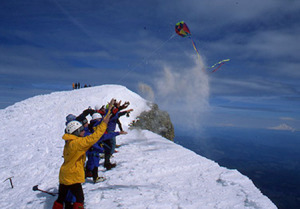

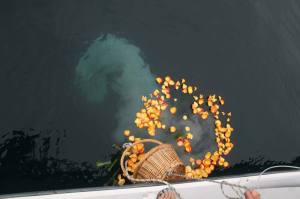


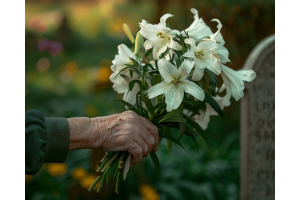
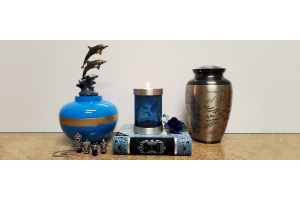
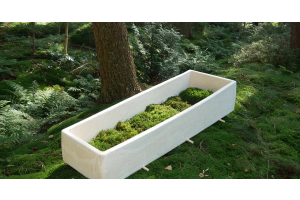
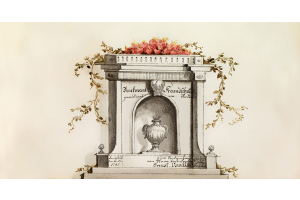

Sincerely,
Susan Fraser
Each state has its own rules and regulations regarding scattering a loved one's cremains. Which states are you looking to scatter? For example, the majority of states do not allow people to scatter cremains on beaches or rivers. However, California allows cremains to be scattered 500 yards from a beach. National Parks are also popular options and are favored to be more accommodating. Traveling with an urn can also stir up questions. All of our urns are TSA approved, just contact your airline for further instructions regarding urn travel.
Sincerely,
Susan Fraser